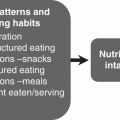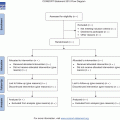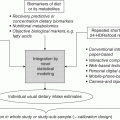8 Maria J Maynard Leeds Beckett University In developing initiatives to improve health and address health inequity, additional consideration may have to be given to ensuring that diverse populations are included. For some population groups, particularly ethnic minorities, there has been limited research on what is acceptable in terms of diet and nutrition assessment tools and intervention materials. This chapter explores the factors that need to be taken into account when including different ethnic groups, conducting studies in developing countries and working across regions or countries in migration studies. In addition, it describes considerations when including individuals at different stages of the life course – during pregnancy, in childhood and at older ages. Indicators of the quality of reporting in dietary assessment methods are crucial across all population groups, and there is a particular issue with dietary energy misreporting across some groups. Issues around body size and body composition measures across groups are also addressed in this chapter. The term ethnicity comes from the Greek word ‘ethnos’, which means ‘nation’ or ‘people’, and refers to a shared identity through common cultural traditions (typically language, religion and diet), nationality, geography, ancestry and history. ‘Ethnic minority’ refers to a numerical minority, but also to those in a position of disadvantaged power relations (Platt 2011). Ethnicity is therefore a fluid, social construct that may vary according to context. For example, migrants’ and indigenous minorities’ offspring may be deemed to be of their parents’ ethnic group(s), but may themselves also perceive their identity as relating to the majority community while remaining distinctive, for example ‘British Asian’ or ‘Asian American’. Ethnicity is often used interchangeably with the term race, which has its origins in the concept of biological categorisation of groups. Due to difficulties with the use of race, the term race/ethnicity is also frequently seen. Researchers therefore need to be clear on the specific definition and the intended meaning in the use of these terms in their work. Ethnic groupings are imprecise and fluid, so any definitions used must be made explicit at the outset of a research project and will vary according to the requirements of the research. There is no universal consensus on assigning ethnic groups. In the UK, consistent groups are commonly created by permitting people to assert their own identity, in addition to using parental and grandparental place of birth. The contrasts in approaches to measuring ethnicity between the UK and the USA are shown in Table 8.1. Table 8.1 UK and US ethnicity/race census questions and response categories. Ethnicity classifications provide a way of highlighting important differences and inequalities between groups. Some ethnic groups are at a higher risk than the majority population of nutrition-related chronic diseases such as obesity, cancer, type 2 diabetes and cardiovascular conditions. These ethnic differences are a key feature of health inequalities in developed countries and have been well documented among migrant and indigenous minority groups in the UK, USA and Australia (Nazroo 2010). Many populations are dynamically enriched by a range of ethnic groups and such minority groups should be key targets when tackling inequalities in health. The main problems associated with using ethnicity as a research variable include errors of measurement and the degree of heterogeneity of groups. Senior and Bhopal (1994) suggest a number of ways in which the value of ethnicity as a research variable can be improved. Recommendations include recognising the limitations of classification methods; giving at least equal weight to consideration of socio-economic differences as to ethnic differences; not generalising the results of research on ethnicity and health over time, generations or populations with different histories of migration; and following descriptive research with detailed examination of environmental, lifestyle, cultural and genetic influences. Measuring socio-economic status among minority groups presents its own challenges. Occupational socio-economic status alone may not be an adequate measure among minority ethnic groups, as some groups are more likely to be in manual occupations than the general population; in some cases this is despite being well educated and having previous professional jobs in their home countries (this is known as downward mobility). Multicomponent proxy measures may be more appropriate: in addition to occupation and education measures, these can include access to standard-of-living items. To ensure consistency, multicomponent and traditional measures can be compared in the same study and with national data on, for example, socio-economic status. Agreeing core principles for the conduct of ethnicity and health research has been a challenge to date, with a number of disciplines represented in this field. A Delphi exercise was undertaken among a range of academics and practitioners to explore the possibility of deriving common principles for ethnicity and health research (Mir et al. 2013). A Delphi exercise involves the creative exploration of ideas in a structured process of collecting information from an expert panel, usually with a series of questionnaires and opinion feedback, with the aim of attempting to reach consensus (Adler and Ziglio 1996). The ten key principles devised by this group for framing, undertaking and using ethnicity and health research (known as the Leeds Consensus Principles) are shown in Table 8.2. The group acknowledged that study design and data-collection decisions are likely to be shaped by disciplinary norms and practical constraints. However, there was widespread consensus on the need to avoid the replication of patterns of social exclusion, stereotyping and stigmatisation, and that research efforts should contribute to better healthcare experiences and better health outcomes. Table 8.2 The Leeds Consensus Principles for research on ethnicity and health. Mir, G., Salway, S., Kai, J. et al. (2013) Principles for research on ethnicity and health: The Leeds Consensus Statement. European Journal of Public Health, 23 (3), 504–510. Nutrition-related research among minority ethnic groups can include the whole range of study designs: quantitative (cohort, intervention and so on) and qualitative (interviews, focus groups). However, a number of design issues need to be considered and addressed. Commonly there are limited sampling frames for minority ethnic groups and therefore convenience, pragmatic and quota sampling is common (Chaturvedi and McKeigue 1994). Alternative methods for identifying target groups include name-recognition software for surname analysis, which is useful for those groups (mainly South Asian) whose names are most distinctive. Surname analysis cannot disaggregate populations according to place of origin, however, and as exogamy (marriage outside one’s own group) increases, additional methods will need to be developed. Frequently used sampling frames include general practitioner lists in the UK, which now feature ethnic monitoring, electoral registers (to determine areas of high ethnic density) and samples of occupational groups, as well as mailshots with registered mail envelopes, followed by door-knocking or screening to confirm the ethnicity of household members. The latter screening method was used to good effect to boost ethnic minority samples in the Health Survey for England 2004 (http://www.hscic.gov.uk/pubs/hse04ethnic), which included diet and nutrition related health indicators. Additional activities are often needed to gain support for studies, particularly in terms of community acceptance and trust. Community participation or community assets approaches refer to improving the understanding of community needs and assets among partners, service providers, local policymakers, other influential community members and the broader community. These approaches are particularly useful for engaging hard-to-reach groups in order to establish trusting relationships between researchers and communities. As the ethos of the community assets approach is one of mutual benefit, improving community health and enhancing community involvement should also be goals in addition to achieving the academic research objectives. The overarching aim in this approach is therefore equitable community participation with the highest level of community involvement that is feasible or practical. Non-traditional venues for targeted community research and interventions to engage minorities, such as places of worship and barber shops, have been used extensively in the USA, but require further exploration in the UK and elsewhere (Maynard et al. 2009). Frameworks for engaging communities (including minority communities) such as Ownership, Control, Access and Possession (OCAP) in Canada, Community Based Participatory Research (CBPR) in the USA and the UK’s People-Centred Public Health principles could usefully be applied to the nutrition research context (Schnarch 2004; Minkler and Wallerstein 2010; South et al. 2013). Culture – the behaviours, traditions, beliefs and values of a particular group – has a major influence on the diet choices, food preparation, food preferences and eating habits of different ethnic groups. Traditional foods can play an important part in the diet as they contribute to the maintenance of cultural customs, social networks in destination countries and links with home countries. Among many ethnic groups it is also traditional for families to eat together. Religion is a key cultural influence on food-related habits for a number of ethnic groups. Religious dietary laws proscribe the consumption of non-halal foods (known as haram) among Muslims (mainly Pakistanis and Bangladeshis, but also other South Asian and African groups). Other related practices include washing the hands and the mouth before and after meals and before prayers, and using the right hand for eating, the left for washing the body. Among Hindus (mostly Indians), the cow is sacred so beef is not consumed. Strict Hindus are vegetarian due to their belief in reincarnation; some avoid additional foods such as onions, garlic, eggs and coconut, often on specific days. The religious laws of Sikhism, originating from the Punjab region of India, advocate refraining from alcohol and ritually slaughtered meat. Vegetarian meals (langar) served free of charge at Sikh gurdwaras (temples) can be an important component of the diet of this group. Seventh-Day Adventism is one of the largest Christian denominations among Africans, Caribbeans and African Americans. Many Adventists are ovo-lacto vegetarians and non-vegetarians avoid pork and fish without fins or scales. Some avoid tea, coffee and other caffeinated drinks and most avoid alcohol. Acculturation describes the multidimensional and dynamic process by which a minority adopts the behavioural patterns of the majority group (Satia 2010). A number of studies have shown the consequences of dietary acculturation to be detrimental. Examples include the increased intake of saturated fat and energy-dense convenience foods among Black Caribbeans in the UK, potentially increasing disease risk (Sharma et al. 1999), and similarly the increase in ‘Western’ eating habits and decrease in traditional food practices among the Inuit of the Canadian Arctic, consistent with a rise in diet-related disease (Hopping et al. 2010). Nevertheless, it is important to bear in mind that the influences are not all negative or one-way: mutual exchange of food habits means that while minorities are influenced by the food culture of the majority, they contribute to the availability of an ever-increasing range of new food items in shops and restaurants. There are varying degrees of acculturation between ethnic groups, and within-group variation such as in different generations should be considered, with minority children more likely to engage in majority food cultures than their parents (Khokhar et al. 2013). While considering ‘culture’ as an explanation of differences in health outcomes or behaviours between groups, structural social processes such as socio-economic status, income and education should also be borne in mind. The above cultural and other influences have a number of practical implications for assessing dietary intake among minority groups (Vyas et al. 2003; Ngo et al. 2009; Sharma 2011). Concomitantly, weaknesses in food and nutrient assessment in ethnic groups most commonly include limitations in recipe information, portion sizes and food composition data. Improvements in these areas are needed in order to carry out accurate dietary assessments and the requirement for standardised dietary assessment tools needs to be balanced with specific cultural tailoring. The acceptability and appropriateness of techniques and instruments as well as their validity are under-researched in nutrition-related studies among some minority groups. Translating study materials (see Section 8.4) may be a necessary part of the cultural tailoring of methods for those who do not speak the language of the host country. It may also be important as a mark of respect for some groups, particularly among elders. Clear descriptions of methodologies and their adaptation are required in research dissemination materials (papers, reports and so on) to enable replication and wider implementation. Lists of the most commonly reported foods, portion sizes and food preparation methods need to be field tested for the development of retrospective methods such as food frequency questionnaires (FFQs). Confirming recipes and cooking practices with the target populations is essential, as public sources (cookery books, the internet) may differ significantly from day-to-day practices at home. A number of foods will have the same name across cultures, but have different compositions and nutrient intakes, indicating the importance of using the correct terminology for both foods and portion size. Account needs to be taken of the increasing availability of culturally specific convenience and fast foods; additional prompts may be needed in assessment methods for these and for high-energy snack foods such as patties, fried dumplings and pakoras, as well as sugary drinks. It should not be assumed that data on ‘average’ food portion size for the majority population are applicable to minority populations, either for commonly consumed or ethnic-specific foods. There is no consistent evidence on the most appropriate method of portion size assessment among ethnic minority groups. However, use of visual aids such as food photographs or food models is considered important to avoid assumptions based on majority population data. For prospective methods employing estimated portions, differences between groups in common household measures will need to be documented. Food composition databases designed for the majority population usually lack foods and dishes commonly consumed by minority ethnic groups. Cross-country collaborative efforts such as the European Food Information Resource Network (EuroFIR) have increased the scope, reliability and validity of minority ethnic food composition data in national databases in France, Israel, Spain, Denmark, Italy, the Netherlands, Belgium and the UK. The UK arm of EuroFIR, focusing on South Asian diets, has demonstrated that key sources of nutrients (based on chemical analysis of foods), portion sizes and eating practices differ significantly among children and adults in South Asian ethnic groups compared to Caucasian British (Khokhar et al. 2013). Among Black Caribbeans in the UK, varying portion sizes have been identified compared to the Caucasian population for local ‘British’ foods such as potatoes, and average portion size data have been established for local and ethnic-specific foods and composite dishes (Sharma et al. 2002). Ethnic differences in trends in the portion size of energy-dense foods have been identified in the USA, with the greatest increases among African American and Hispanic groups. There is, however, much scope for further development of portion size and food composition data for a number of ethnic groups. The diets of the growing UK Black African populations represent a distinct gap in the literature in Britain. The largest of these groups are from Nigeria and Ghana, with long-established communities in the UK, other European countries, the USA and Canada, but relevant dietary data are sparse. Research has been conducted updating UK food tables with the nutritional composition of commonly consumed Ghanaian dishes in London and Accra, Ghana, including folate content determined by microbiological assay (Owusu et al. 2010). The sodium content of Nigerian, Ghanaian and Caribbean takeaway meals has also been analysed. Studies of East Asian minorities have largely been carried out in the USA, with few studies in Europe, and there are a limited number of large-scale studies among migrant Eastern Europeans. Extensive development of food composition databases has been carried out for minority groups in Bangladesh, American Indian and Alaskan Native populations in the USA, for diverse ethnic groups in Hawaii and for indigenous people in Canada (see for example Kolonel et al. 2000; Hopping et al. 2010; Illner et al. 2012). Countries are categorised by the World Bank according to gross national income (GNI) into low-, middle- and high-income countries, and this is useful in research terms for classifying nations. In some instances the terms low- and middle-income countries (LMICs) have tended to replace the term developing countries, and are employed in this chapter, but they are often also used interchangeably. In the past there has been a logical emphasis on malnutrition (under-nutrition) and micronutrient deficiency in nutritional research in low-income countries. However, the ‘nutrition transition’ in a number of poorer countries has changed the landscape of nutrition-related research. The term denotes a shift towards energy-dense foods and low energy expenditure, contributed to by the globalisation of food production and distribution and internal migration from rural to urban centres (Satia 2010). Such changes in dietary patterns and food availability have been deemed causal factors in the rise of nutrition-related disease, particularly obesity, in LMICs (Popkin, Adair and Ng 2012). Nutrition-related research conducted in low-income countries requires a number of logistical, cultural, ethical and methodological issues to be taken into consideration. Logistical issues include time required for travel to remote rural areas and problems related to low income (water, food and fuel scarcity). Research in hard-to-reach areas can be worth pursuing if such logistics can be overcome. Residents may be highly willing to participate if the motivations and purpose of the research are clear, and in communities where needs have been previously neglected projects can make a significant contribution to health inequalities (Cameron and van Staveren 1988). Ethical concerns can range from gaining trust, ensuring informed consent (especially where there is cross-cultural working between an external research team and the study population) and managing expectations of the benefits of the study. Written materials or methods requiring written records may have to be avoided in areas of limited literacy and where there may be difficulties in accommodating a variety of dialects. Awareness of local customs is required, including religious and tribal customs, particularly those related to food practices and food taboos; food composition databases may need to be further developed. Employing local professionals, such as interpreters and other members of the community, is often invaluable in obtaining rigour in the research process, and where possible should be combined with activities that may make a lasting contribution to the health and empowerment of communities. Researchers do need to be aware, however, that there may also be potential drawbacks to research being conducted by those with an ‘insider identity’, including respondent concerns about confidentiality. The focus of this section is on low-income countries; however, similar issues may be faced in research among peoples in remote areas of high-income countries, such as Inuit and Aboriginal populations in Canada and Australia. The time and costs involved in travelling long distances, challenges to participant recruitment such as geographical isolation and identifiable populations leading to confidentiality issues are all potential difficulties in the research process. The aim of rigorous translation is to achieve ‘content equivalence’ – that is, for the content and meaning to be the same in both languages. However, a number of translation methods exist and there is no accepted ‘gold standard’. Long-standing methods include back-translation, the bilingual technique, the committee approach and the pre-test procedure (Cha, Kim and Erlen 2007). Back-translation is a resource-intensive iterative process involving blind translation by one translator, then retranslation from the target to the original language by a second translator. The original and the retranslated version are then compared and if an error is found, a further translator retranslates, continuing until no errors are found. The bilingual technique involves administering both the original and the translated tool to bilingual members of the target population and comparing their responses. The key limitation of this method is that the bilingual participants may differ from the monolingual participants in socio-economic status, degree of acculturation and so on. The committee process involves a group of bilingual experts (usually three or more) who translate from the original to the target language, the benefit being that a committee member’s mistake may easily be picked up by other members. However, it requires the availability of a number of bilingual individuals, with similar limitations to the bilingual method in terms of the lack of representativeness of the target group. Focus group and ‘think aloud’ techniques extending the committee method have also been tested (Daniel, Miller and Wilbur 2011). The pre-test procedure involves a pilot study of participants from the target population in which potential issues and problems are identified, such as by probing participants on their view of the meaning of individual items.
Considerations for Including Different Population Groups in Nutrition Research
8.1 Introduction
8.2 Ethnicity in research methods
Defining ethnicity
Measuring ethnicity
UK census 2011 ethnicity question and response categories
US census ethnicity/race question and response categories
What is your ethnic group or background?
Choose one option that best describes your ethnic group or background
White
English/Welsh/Scottish/Northern Irish/British
Irish
Gypsy or Irish Traveller
Any other White background, please describe
Mixed/Multiple ethnic groups
White and Black Caribbean
White and Black African
White and Asian
Any other Mixed/Multiple ethnic background, please describe
Asian/Asian British
Indian
Pakistani
Bangladeshi
Chinese
Any other Asian background, please describe
Black/African/Caribbean/Black British
African
Caribbean
Any other Black/African/Caribbean background, please describe
Other ethnic group
Arab
Any other ethnic group, please describe
1. Are you of Hispanic, Latino, or Spanish origin?
No not of Hispanic, Latino, or Spanish origin
Yes, Mexican, Mexican Am., Chicano
Yes, Puerto Rican
Yes, Cuban
Yes, another Hispanic, Latino, or Spanish origin – print origin, for example Argentinean, Colombian, Dominican, Nicaraguan, Salvadoran, Spaniard, and so on
2. What is your race? Mark one or more boxes
White
Black, African Am., or Negro
American Indian or Alaska Native – print name or enrolled or principal tribe
Asian Indian
Chinese
Filipino
Japanese
Korean
Vietnamese
Other Asian – Print race for example Hmong, Laotian, Thai, Pakistani, Cambodian, and so on
Native Hawaiian
Guamanian or Chamorro
Samoan
Other Pacific Islander – print race, for example, Fijian, Tongan, and so on
Conducting ethnicity and health research
Importance and purpose
1. Ethnicity is often associated with disadvantage and ill-health. Researchers consequently have both a professional and ethical responsibility to incorporate evidence on ethnicity into their work and recommendations.
2. The purpose of research on ethnicity and health should be for the well-being and betterment of populations being studied and equity should be the guiding ethical principle. Researchers must be alert to the dangers of discriminatory thinking and behaviour and guard against actual and potential harm resulting from their research.
Framing and focus
3. It is important to be explicit about the assumptions and theories that underlie research on ethnicity and health.
4. There is a need for research to, where appropriate, examine diversity within ethnic groups and avoid homogenization. For example, age, gender, religion, education, socio-economic position, geography or time of migration may all impact on the generation of ethnic health inequalities. Investigation of ethnic health inequalities should pay due regard to the ways in which ethnicity intersects with other forms of difference in order to understand how and why it may be relevant.
5. There is a need to improve the participation of minority ethnic communities in all stages of the research process. Appropriate participation should be defined by these communities, then promoted by researchers and statutory agencies and resourced by funding bodies.
Data collection and analysis
6. The use of ethnic categories and labels should be meaningful in relation to the particular experiences and outcomes being explored.
7. Census categories are often useful for exposing disadvantage, but additional measures may be needed to explore the processes through which disadvantage is created.
8. Analysis of health inequalities should pay attention to the social context in which ethnic differences in health outcomes are measured and health behaviours occur.
Future priorities
9. There is a need to focus on intervention studies that help identify effective ways of reducing inequalities.
10. More research is needed on appropriate models for involving minority ethnic communities throughout the research process. For example, models for community capacity building, empowerment, representativeness and continuity of engagement.
Study design
8.3 Ethnic minority diets
Cultural influences
Dietary intake assessment
8.4 Research in developing (low- and middle-income) countries
Translation of study materials/data
8.5 Multi-centre migration studies
Stay updated, free articles. Join our Telegram channel

Full access? Get Clinical Tree






